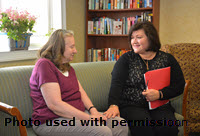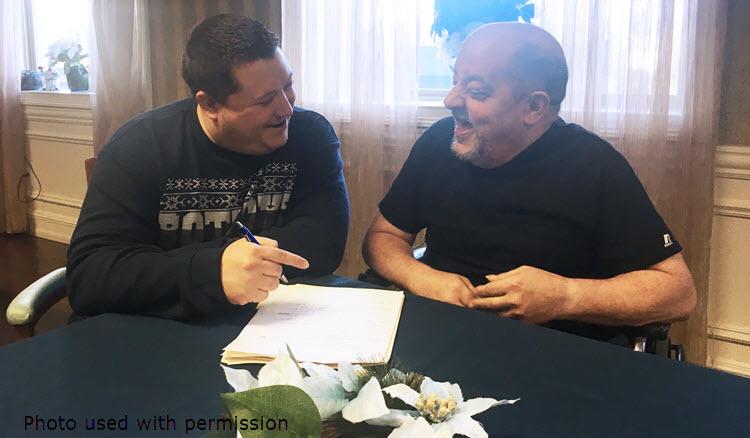Leaving Rehab with a long list of equipment and lifestyle modifications – it’s overwhelming.
Rehabilitation allows you to regain strength, manage a chronic illness, or relearn activities of daily living. Typically, you are not back to “normal” after your stay. Which is why a discharge care team starts planning your release almost the moment you enter the facility.

The financial incentive for this safe discharge has grown with the Medicare readmission penalty. Medicare will pay for 100 days of rehabilitation at a sub-acute rehab after an “event” (defined as a three-night stay in a hospital). If a patient is discharged from rehab (or the hospital) and is readmitted to the hospital within 30 days, Medicare penalizes both the rehab center and hospital for high readmission rates.
A smooth transition often requires medical equipment not typically found in the home. Things like a wheelchair are considered Durable Medical Equipment (DME) and are paid for by Medicare. Other needed equipment can include walkers, bedside commodes, hospital beds. You should expect the discharge team to work with you to get the necessary medical equipment set up at home and ready to use. They should educate the patient and family members on how to use the equipment prior to going home.

Despite all these meetings and plans you make, I know from personal experience this is still completely overwhelming. As a family, you often don’t feel prepared to help your loved one continue their rehab at home and some of the medical requirements are daunting.
So, what would it be like to have a rehabilitation facility follow you closely once you are home? Let me tell you about Wedgwood Gardens and their unique “Home Sweet Home” program.
Wedgwood Gardens is a CMS rated 5 star family owned sub-acute care rehabilitation facility with Long Term Care. They have been in business for 50 years in two different locations. Because they are family owned, they have the flexibility to put a program like Home Sweet Home in place. The program, administered by the discharge care team, includes the social workers, admissions, and therapy team. Jayson Lotano is their Director of Recreation and Home Sweet Home coordinator. The advantage of this dual role is that Jayson gets to know the residents through the activities, so they feel comfortable with him.
Once the patient is home, Jeannie Kim, Marketing and Communications Coordinator, calls and sets up an appointment within 1-2 days of discharge. If the patient agrees to a home visit the HSH coordinator, or in special cases, the Medical Director goes out to see the patient within 5-7 days of discharge. This home visit is conducted wherever they are living, whether it is at home or an Assisted Living facility. The goal is to assess how the patient is doing, ensure they feel safe and the required equipment is there and properly set up.
Home Sweet Home staff members ensure that any problems from the first visit are resolved. They continue to follow up with phone calls during those critical 30 days after release from Wedgwood Gardens. If another home visit is warranted, they go back.
One benefit is that Jayson knows from past interactions how the person is physically and mentally when released. He can benchmark if they continue to be alert and oriented. A change in physical or mental status, results in a follow up with the family and other Wedgwood team members. In one instance the change he saw was so alarming that he sent the Medical Director to the home and the person was re-admitted.
Follow-up goes beyond home visits to interventions like this one: A discharged resident received a recommendation for another type of walker. Contacted by the son, Jayson let the Director of Rehabilitation know, who in turn contacted the medical supplier to arrange the change. Everything was completed in a smooth and easy flow, at no cost to the resident.
Of course, the financial goal is to limit readmission rates and this program was initially created because of the Medicare rule. And it doesn’t hurt that the readmission rates for Wedgwood Gardens went down significantly in 2016. But Home Sweet Home has taken on a life of its own. Even if the Medicare penalty went away, Wedgwood Gardens would still have Home Sweet Home because it is in the best interests of their residents.
It’s the personal touch that set this program apart. Even if there are no issues to resolve, Jayson spends quality time with each person. Because he has gotten to know them they are comfortable with him. He knows their likes, dislikes, and names of family members, including pets. On visits, he has been known to do dishes, make lunch, take out garbage and even unclog a drain.
Disclaimer: The material in this blog is for educational purposes only. It is not intended to replace, nor does it replace, consulting with a physician, lawyer, accountant, financial planner or other qualified professional.
With thanks to my collaboration partners Jayson Lotano, Director of Recreation and Home Sweet Home coordinator and Jeannie Kim, Marketing and Communications Development. Website: www.WedgwoodGardens.com

